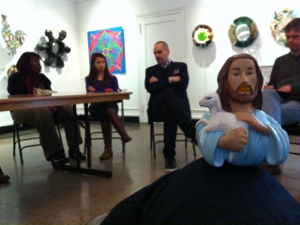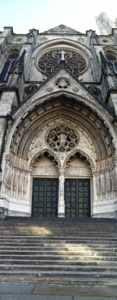Many of out conversations seem to have had a dimension of space. There are the obvious reasons – space in New York City is expensive, hard to obtain, and difficult to maintain. But there is also the undergirding reason that space provides a powerful platform for ideas. Whether sustaining ideas of old or promoting new ponderings, space provides power.
Site Visits
- African Burial Ground
- Alice Austin House
- Gay Liberation Monument
- Global Arts Corps
- Hindu Temple Society
- Historic House Trust of NYC
- Irish Hunger Memorial
- Louis Armstrong House
- Museum of Biblical Art
- Museum of Jewish Heritage
- Museum of Reclaimed Urban Space
- Museum of the Chinese in America
- Museum of the Native American
- National September 11 Memorial
- New York Historical Society
- Occupy Sandy
- Schomberg Center for Black Culture
- South Street Seaport Museum
- St. John the Divine Cathedral
- St. Mark's Poetry Project & Poetry Archive
- Studio Museum in Harlem
- Tenement Museum
- Whitney Museum of Art
Meta
-
badkins2012
-
benjaminscammon
-
devinzuber
-
Frances
goofymystic
-
Rev. Daniel Borysewicz
-
Meredith
meredithmassar
-
nielsteunis
oaksidea
-
Sandra V.Sanders-West
-
Timothy Gregoire-Pierson
-
Sarah
-
willbdtanner
-







